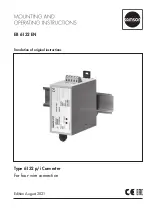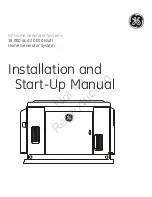
Equipment Description
Page 4-16
Instruction Manual: evolution 5000 E5500 Mobile Contribution Encoder
ST.TM.E10033.3
Each new service automatically defaults to ‘On’ and is enabled through to
the output. The user can select the desired service, (by manually selecting
it), and choose to have the service either ‘On’ or ‘Off’. (If the RAS card is
fitted, the choice will be ‘On’, ‘On and Scrambled’ or ‘Off’). If the service is
set to ‘Off’ then all trace of the service is removed from the output stream.
Setting Bit-rates and Avoiding Overflow
Overflow is the condition in which the total of the contributing service bit-
rates, (including the host mux), exceeds the output bit-rate of the primary
remultiplexing unit.
NOTE…
Only useful packets (e.g video, audio and data, etc) count towards the bit-rate of the contributing
service bit-rates, not null packets.
The easiest way to configure the bit-rates to avoid overflow, is as follows:
1)
Divide the 188 byte output bit-rate of the primary (master)
remultiplexing unit, (this can be found in the
Setup/Mux/Host
Menu/O/P Rate (188)
menu), by the number of contributing services
(including the primary service). Such that:
O/P Rate (188) / N = Host Rate (188)
[Where N = number of services to be combined including primary]
2)
Then set the Host Rates (188) of each contributing unit and the master
unit to equal the calculated Host Rate.
NOTE…
Use the Setup/Mux/Host Menu/Host Rate (188) menu.
If the above procedure is followed, an equal bit-rate is allocated to each
contributing unit. By setting the host rates, the video and audio bit-rates
will be automatically adjusted to suit.
The amount of spare bit-rate and input bit-rate that has been used in the
Remultiplexer can be monitored using the bar graph indicators in the
Setup/Mux/Services
menu.
What to do if Overflow Occurs
If an ‘Overflow Error’ is indicated on the equipment, then the incoming
contributing bit-rate exceeds the outgoing bit-rate. To avoid corruption the
user must reduce the incoming bit-rate by either removing services, (turn
the service ‘Off’ or remove the ASI input), or reducing the bit-rate of the
incoming service.















































